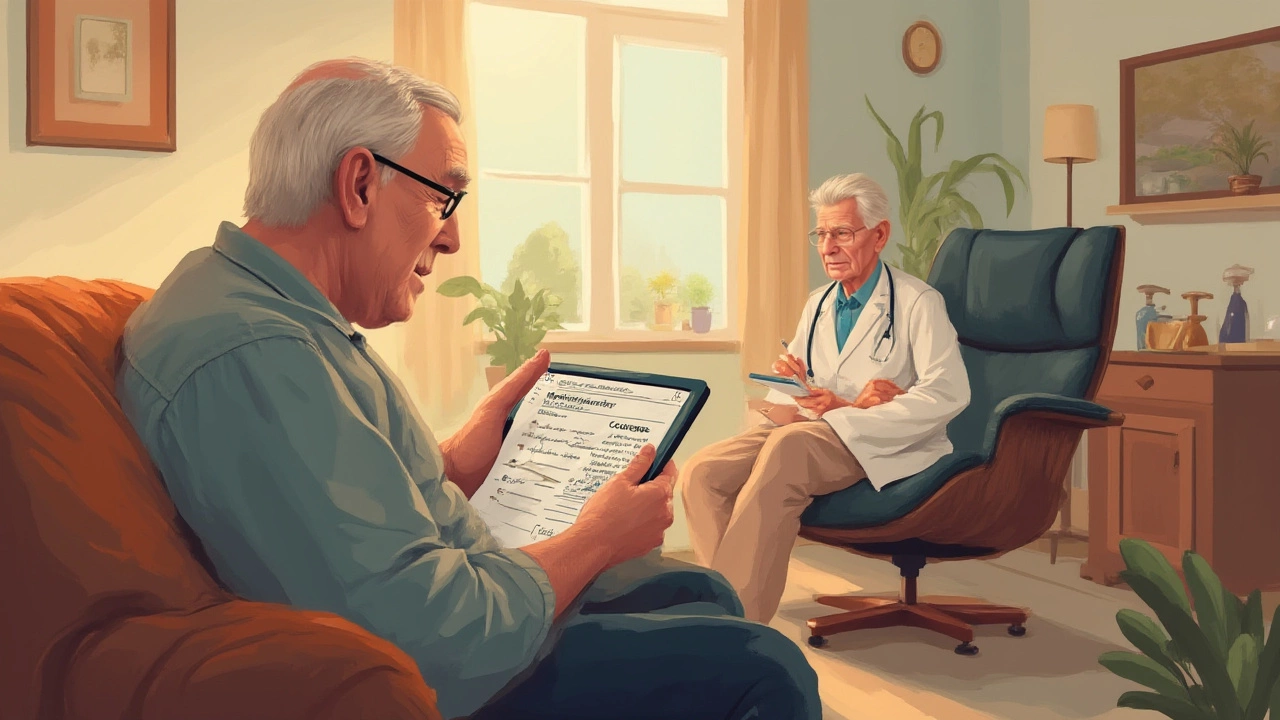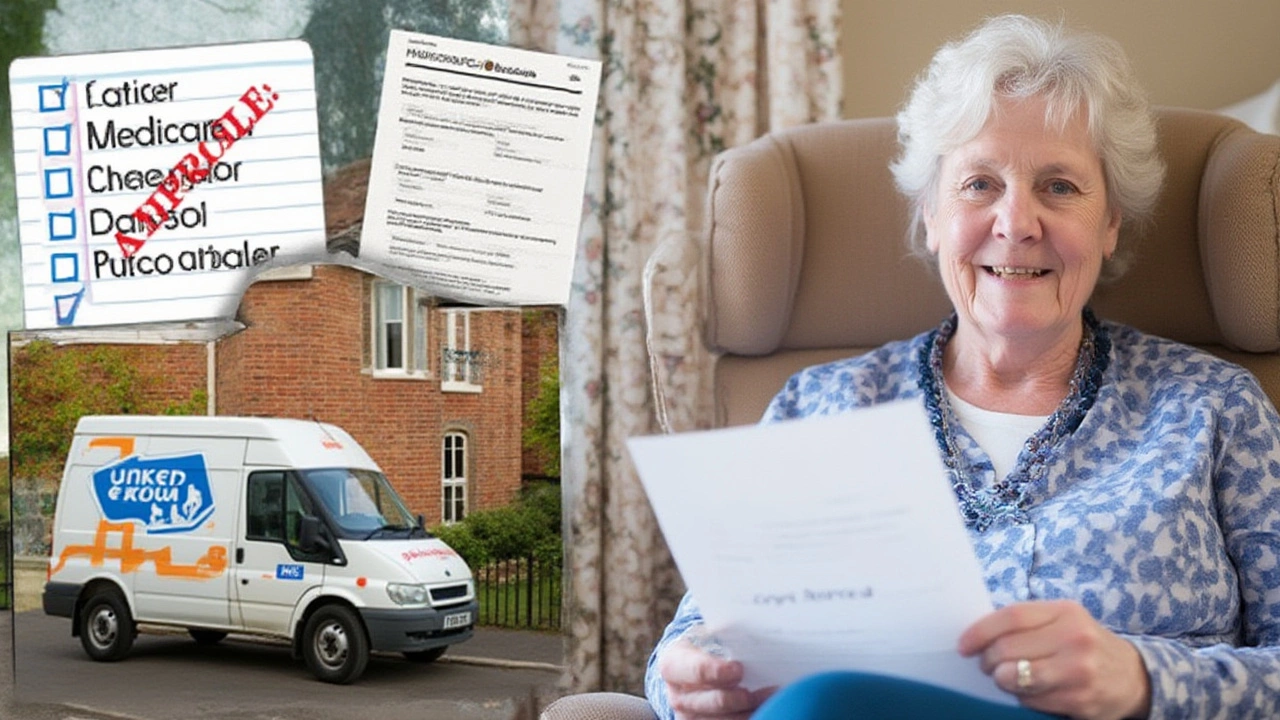Back pain, aching joints, or just the sheer luxury of kicking your feet up—every senior dreams of a comfy recliner. But, here’s the hard truth: these chairs aren’t just about chilling in the afternoon sun. For some, they’re a lifeline. They help with mobility, prevent pressure sores, and even keep swelling in check. So, does Medicare come to the rescue? Or do you have to dig deep into your own pockets for that plush seat you’ve had your eye on? The answer’s not as straightforward as you might think. Guardian angels in the world of insurance—Medicare included—are rarely generous when it comes to home comforts. Yet, under the right circumstances, even the seemingly impossible can become reality. Let’s sift through the rules, the reality, and the fine print to help you figure out if you can snag a Medicare-backed recliner for yourself or a loved one.
How Medicare Classifies Recliner Chairs—And Why That Matters
First things first: Medicare isn’t in the habit of paying for anything that smacks of luxury. Their main game is “medically necessary equipment.” A regular comfy recliner? That’s considered a household item—Medicare pays it no mind. The twist comes with a very specific kind of chair: the lift chair. These look a lot like regular recliners, but with a hidden motor that helps lift the seat and nudge the user up to a standing position. For seniors with severe arthritis, weak muscles, or who are recovering after surgery, this lift mechanism isn’t just a convenience. It’s a game changer.
Here’s the official bit: Medicare Part B covers durable medical equipment (DME). Under the DME rules, Medicare may cover the cost of the motorized lift mechanism found in a lift chair—if your doctor deems it medically necessary. That’s the catch. Medicare won’t pay for the entire recliner chair, only the lifting device itself. Upholstery, cushions, and all those cozy extras? That’s up to you. According to the Centers for Medicare & Medicaid Services, in 2024 the average price for the lift mechanism itself ran between £250 and £400, but a full chair can cost far more, sometimes reaching £1,200 or higher. The distinction is subtle but crucial: you can’t walk into a furniture shop, buy a chair, and expect Medicare to foot the bill.
Let’s get real for a second. If your mobility is limited—because of severe arthritis, neuromuscular disease, or after joint surgery—a lift chair can decide whether you’re stuck at home or actually able to get up, get out, and enjoy life. But, Medicare won’t hand these out to just anyone. You need documentation. A doctor must write a prescription explaining why you need it. Some practitioners balk at this, saying they don’t want to ‘prescribe furniture’. The workaround? Focus on how the device helps you stand up and move independently, not on the chair’s comfy appeal.
Here’s a neat trick: ask your doctor to use specific diagnostic codes that tie your condition to impaired mobility. Chronic arthritis (like osteoarthritis), severe knee or hip degeneration, or muscle wasting issues can all count, but the records have to show your need. Medicare only steps in when they see clear proof that the lifting device is required for basic daily functions—think getting dressed, going to the bathroom, or making tea in the kitchen. The more precise your doctor's language, the higher your odds for approval.
Now, don’t be surprised if your supplier asks for a Certificate of Medical Necessity (CMN). This multi-page document is fiddly, with sections for both you and your GP. If you skip a part, you could be waiting months or lose out altogether. Double-check everything before submission.
Let’s talk about the fine print. Medicare will only pay for your lift mechanism if it’s provided by a supplier that’s officially enrolled in Medicare. And even then, you’re usually still responsible for 20% of the allowed cost after meeting your annual deductible. If the supplier isn’t Medicare-approved, say bye-bye to coverage—and possibly your savings. Don’t get caught out by online ‘discount’ stores that don’t have the right credentials. Always check the supplier on the NHS or Medicare database before you buy.
So, where does that leave the millions of seniors hoping for a comfortable seat? Unless your mobility is genuinely at risk, and your medical records prove it, Medicare won’t pay for a standard recliner. But, for authentic lift chairs—especially when your health care team has your back—there's a path to partial help at least.

The Step-By-Step Process: Getting Medicare to Pay (At Least Some) For Your Chair
Right, suppose you—or your mum, dad, or gran—genuinely need a lift chair. How do you turn paperwork into comfort? Let’s walk through the nuts and bolts, no-nonsense style. The biggest mistake people make is assuming the process is automatic. It is not. Here’s what actually works.
- Get a face-to-face doctor’s visit. This must happen before anything else. Medicare’s rules changed a few years ago—now you need to see your GP in person (or arrange a telehealth call if you can’t get there), and this visit must specifically mention mobility problems and your difficulty standing up from a normal chair.
- Obtain a written prescription. The prescription can’t just say "needs recliner." It should use phrases like "requires lift mechanism due to severe arthritis limiting ability to rise unassisted." If possible, include your diagnosis code (like ICD-10 codes M17.11 for osteoarthritis of the right knee, for example).
- Find a Medicare-enrolled DME supplier. Medicare has a Supplier Directory online. Only purchase from a business that can bill Medicare directly—don’t waste money at major high street furniture shops unless they can prove they’re approved DME providers.
- Complete the Certificate of Medical Necessity. The supplier will help, but you need to coordinate between your GP and the company. Double–check it’s filled in properly; errors or missing signatures stall everything.
- Wait for Medicare approval. In some cases, you’ll get the chair first and receive reimbursement later. Other times, Medicare will pay the supplier directly, and you pay your copay.
- Pay the cost difference. Remember, Medicare only pays for the motorized lift mechanism. The rest of the recliner, including delivery and cushions, is on you. Double-check what the total cost will be upfront.
One smart tip: sometimes, hospitals or rehabilitation centres have spare lift chairs they loan to patients temporarily. Before shelling out money, ask about local charities, the Red Cross, or Age UK—some run equipment-lending programs, especially for recent surgery patients. If you've got Medicare Advantage (not classic Medicare), your benefits might differ. Some plans are more generous, but each policy sets its own rules, so always call and double-check. If you hit a brick wall during the process, don’t throw your hands up—appeal the decision. Medicare’s appeals process is complicated, but you might have more luck with help from an advocacy organisation or your local councillor’s office.
Here’s a summary of the steps you need to follow:
- See your doctor and discuss mobility needs.
- Secure a detailed, diagnosis-based prescription.
- Work with a Medicare-approved supplier.
- Complete all paperwork fully and accurately.
- Verify costs—expect to pay for extras yourself.
- Consult charities if you hit financial obstacles.
It’s not as easy—and definitely not as quick—as shopping online late at night. But with patience and the right paperwork, that lift chair may be within reach. Here’s a comparison table to help clarify what’s covered and what you’ll likely pay yourself:
| Chair Feature | Medicare Coverage | You Pay |
|---|---|---|
| Lift Mechanism (Motorised) | Yes, if medically necessary | 20% after deductible |
| Frame, Fabric, Cushions | No | 100% |
| Delivery & Setup | No | 100% |
| Non-Lift Recliner | No | 100% |
| Follow-Up Repairs | Maybe, depends on cause | Maybe/100% |
Want another tip? Always ask for written estimates from the medical supplier before giving them your doctor’s note. Some sneak in hidden fees for delivery or service contracts. That way, there are no surprises when the bill arrives.

Beyond Medicare: Alternative Ways to Score the Perfect Recliner Chair
So, say Medicare comes up short or the paperwork just drags on forever—don’t call it quits just yet. There are plenty of paths to the perfect recliner, even if you’re on a budget or battling with bureaucracy.
First up: your private insurance, if you have it. Some supplemental health plans (Medigap and others) pick up where Medicare leaves off. They might cover the rest of the lift chair or at least chip in more for the base and upholstery. The key? Arm yourself with the same documents: diagnosis, prescription, and letters about your daily struggles. Never accept a vague “no” from your insurer—ask what specific paperwork or codes they need for reconsideration.
Disability programs can be an unexpected ally. If your mobility issues are tied to an underlying disability, the Department for Work and Pensions (or local authorities in the UK) sometimes help with grants for essential equipment, especially for those on Personal Independence Payment (PIP) or Attendance Allowance. These grants usually require proof that you can’t manage daily tasks or live independently without the chair. It’s more paperwork, granted, but the payoff can be worth it.
Now, furniture charities: organisations like Reuse Network or local Age UK branches often work wonders for seniors on fixed incomes. They refurbish donated lift chairs and sell them at a fraction of new prices—or sometimes provide them for free. If you’re resourceful, you can score a nearly-new motorised chair just by asking the right questions.
Let’s not forget the secondhand market. Dozens of Facebook groups, local Gumtree ads, and community noticeboards offer gently-used recliners—sometimes the electric lift kind—for a song. Before buying used, see if the mechanism is still under warranty and test it out (or ask for videos if buying online). Reputable shops usually offer 6- or 12-month used equipment guarantees.
For bargain hunters, look out for holiday or ‘bank holiday’ sales. While Medicare doesn't care about discounts, your wallet does! Shoppers report best deals in August (post-summer sales) and January (after the post-Christmas rush).
Finally, make friends with your local occupational therapist (OT). OTs often know the ins and outs of grant programs, loaner schemes, and which local medical suppliers are trustworthy. Sometimes, a single letter from an OT can tip the balance for a charity grant or supplier discount.
Key takeaways:
- Explore private insurance and disability grants for extra funding.
- Check with charities for free or discounted equipment.
- Shop secondhand with care—always test before purchase.
- Snag deals at holiday sales for the best prices.
- Ask OTs about programs you might not find online.
The days of expecting Medicare to pay for that plush, full-featured recliner are long gone. But don’t give up the dream of getting up smoothly (and in style). With a dash of paperwork and some clever research, you can still lounge in comfort—and keep your independence, too.


Write a comment